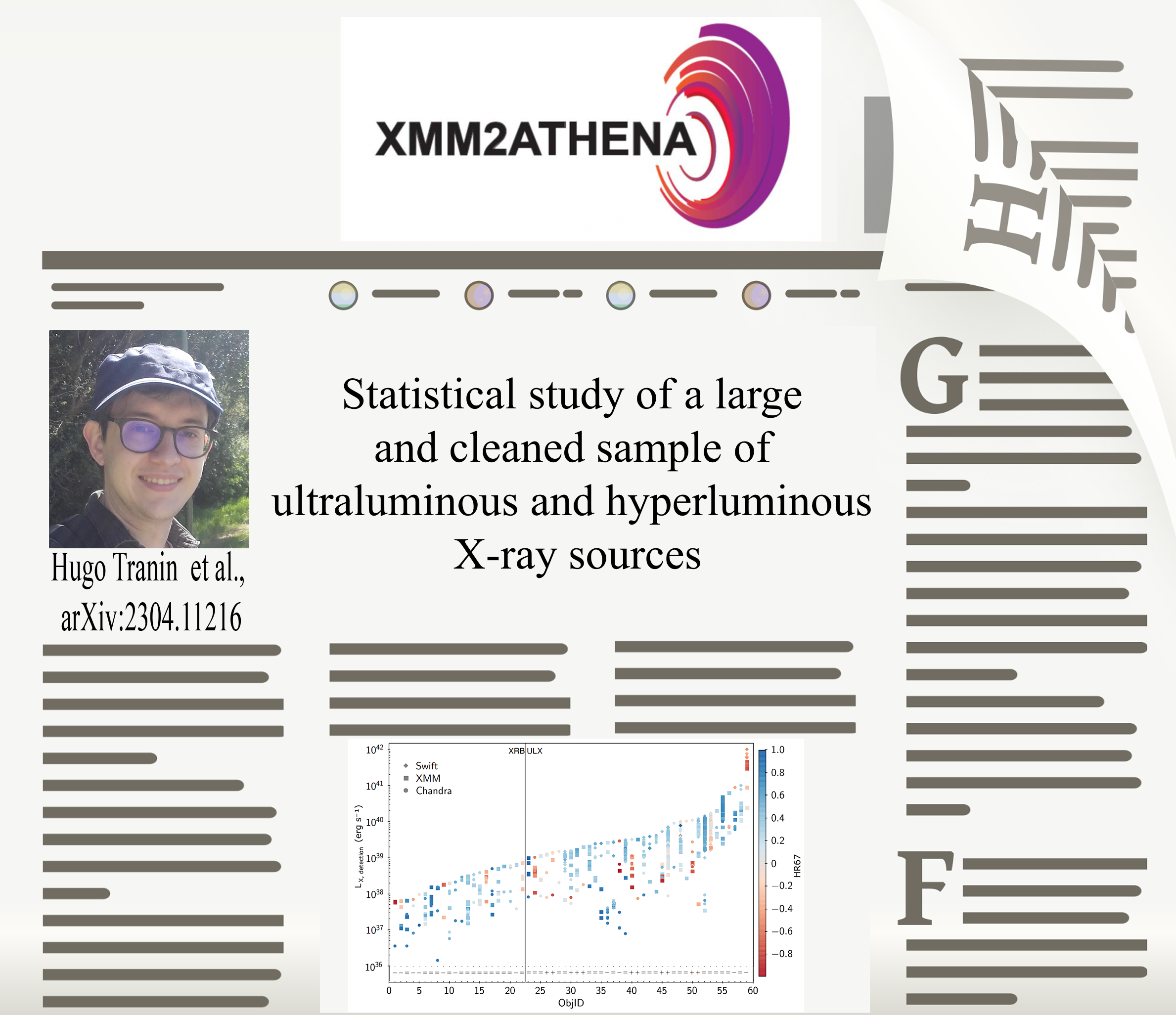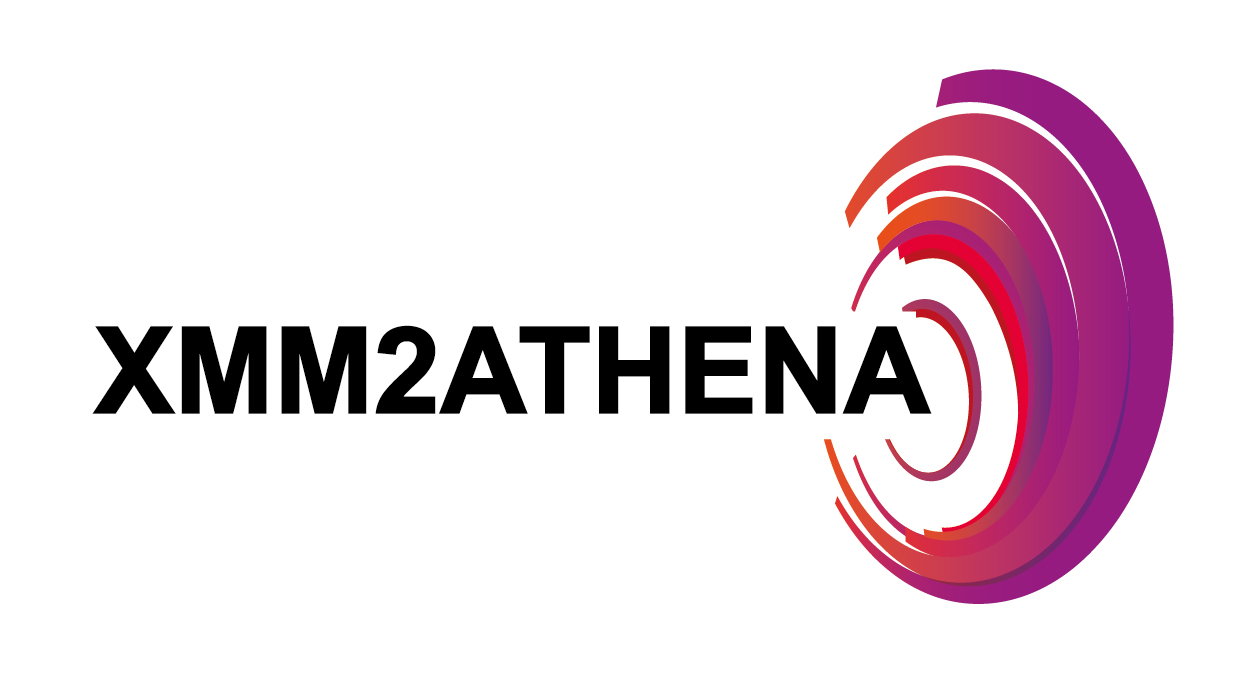Statistical study of a large and cleaned sample of ultraluminous and hyperluminous X-ray sources
 [03 May 2023]
[03 May 2023]
Ultra-/hyperluminous X-ray sources (ULX/HLX) could be interesting laboratories to further improve our understanding of the supermassive black hole growth through super-Eddington accretion episodes and successive mergers of lighter holes. ULXs are thought to be powered by super-Eddington accretion onto stellar-mass compact objects, while HLXs may be accreting intermediate mass black holes (IMBH). However, a significant portion of the sample of ULX/HLX candidates derived from catalogue searches are background AGN. Here we build ULX and HLX samples from recent XMM-Newton, Swift-XRT and Chandra catalogues and the GLADE catalogue of galaxies. We aim to characterise the frequency, environment, hardness and variability of ULXs and HLXs to better assess their differences and understand their populations. After a thorough classification of these X-ray sources, we remove 42% of S/N>3 sources shown to be contaminants, to obtain the cleanest sample of ULX/HLX to date. From a sample of 1342 ULXs and 191 HLXs, we study the occupation fraction, hardness, variability, radial distribution and preferred environment of the sources. We build their Malmquist-corrected X-ray luminosity functions (XLF) and compare them with previous studies. We statistically compare ULXs and HLXs and assess the differences in their nature. The interpretation of HLXs as IMBHs is investigated. A significant break is seen in the XLF at ∼10^40 erg/s. Our ULX sample, having ≤2% of contaminants, confirms that ULXs are located preferentially in spiral galaxies and galaxies with higher star-formation rates. Unlike ULXs, HLXs seem to reside equally in spiral and lenticular/elliptical galaxies. 35% of the HLX candidates have an optical counterpart, and we estimate the mass of 120 of them in the range of 2000−10^5M⊙. Most HLXs are consistent with an accreting massive black hole in a dwarf galaxy satellite.
Download full paper: https://arxiv.org/abs/2304.11216

